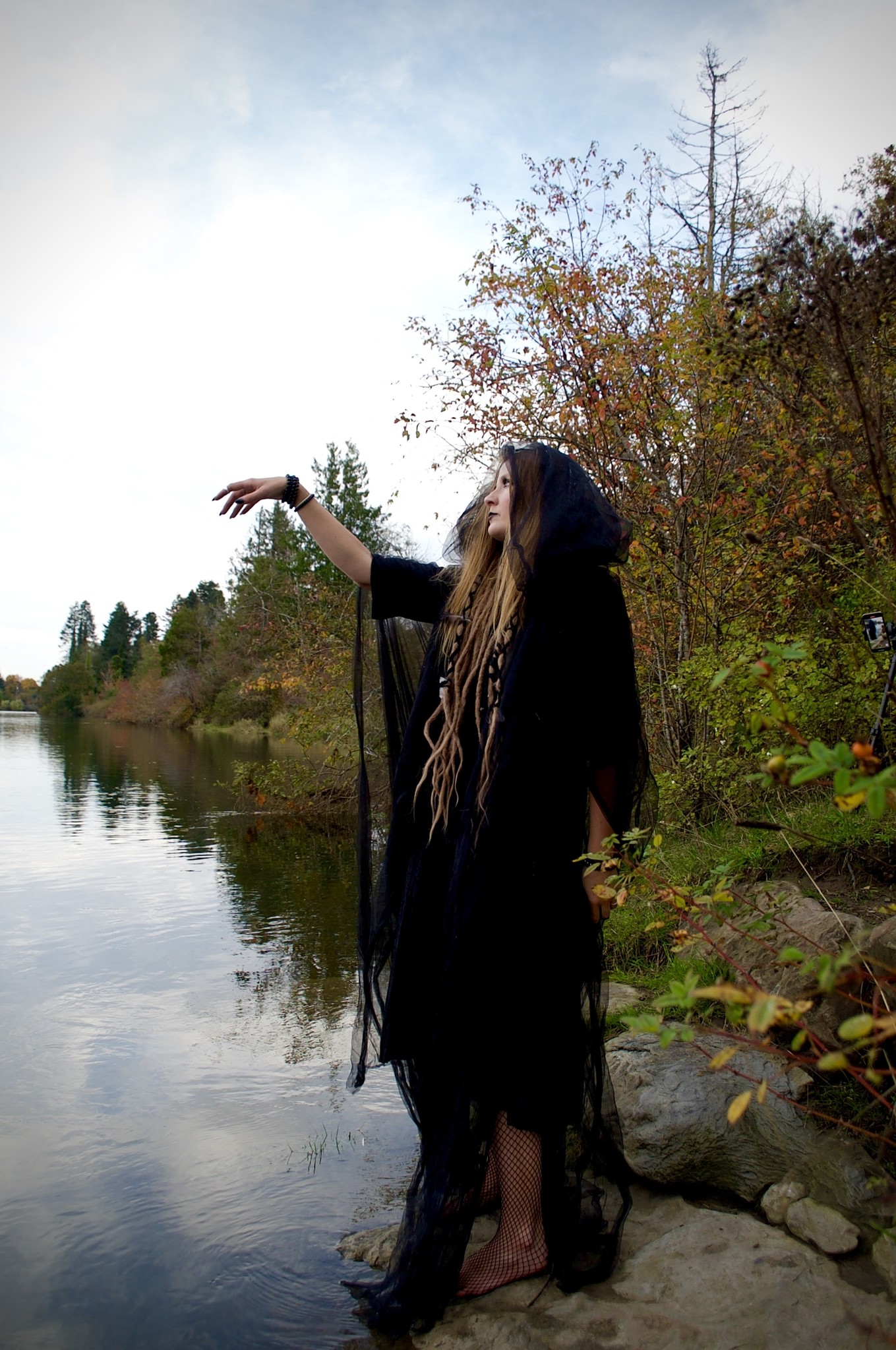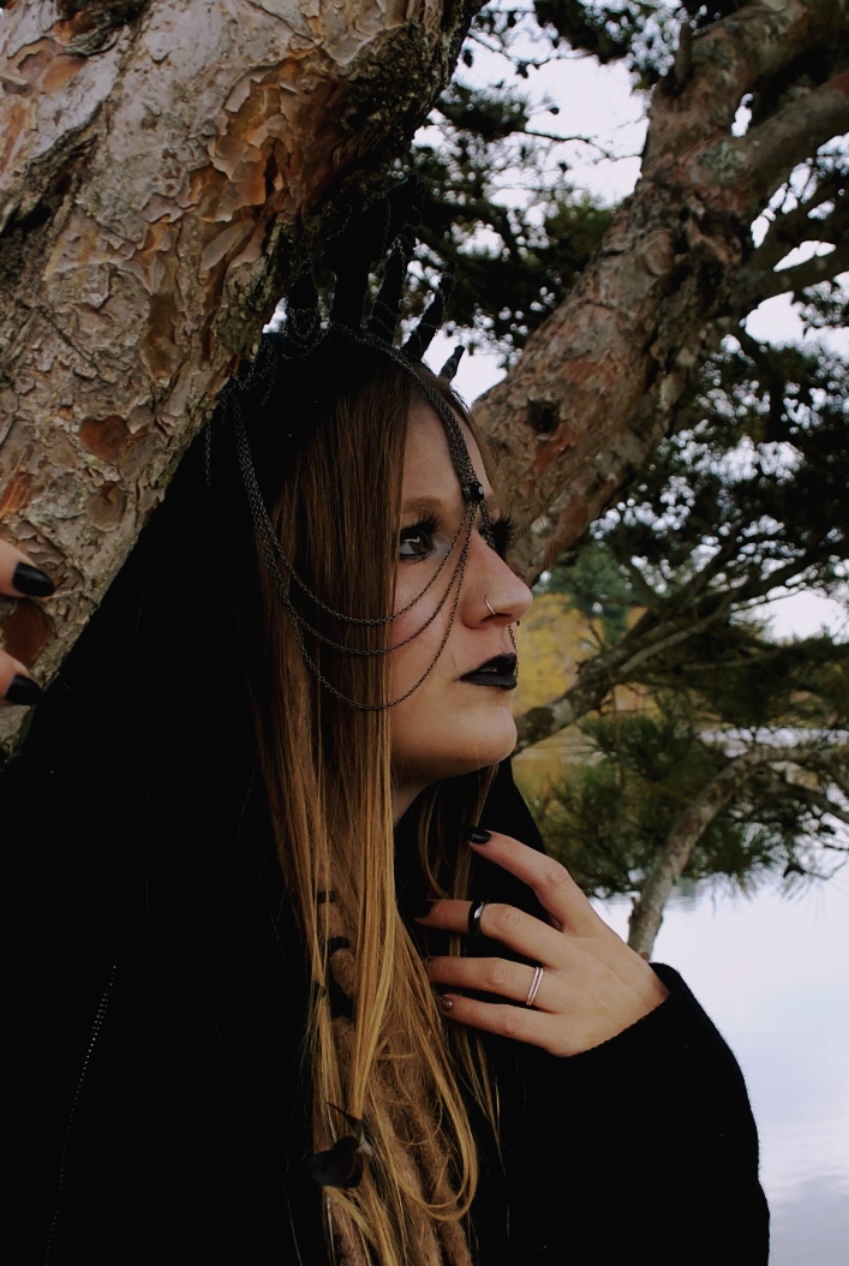Hecate:
Hecate’s abilities in witchcraft, necromancy and sorcery makes her one of the most powerful and mysterious of all witches and she can access one’s magical capabilities immediately. Her obscurity throughout history makes it very difficult to pinpoint her origins and probably predates the written word. Highly associated with nature and the nocturnal, Hecate over time became demonized because of her powerful natural elements.
Hecate: Greek Roots
Hecate, the chief goddess of magic and spells, was widely accepted by Greek religion very early on in Greece mythology. Although she was first thought to be worshipped by the Carians in southwest Asia Minor. They were an ancient seafaring culture that may have had previous lineages with the ancient Minoans. According to Hesoid the Greeks originally worshipped Hecate as the daughter of the Titan Perses and the Nymph Asteria and she presided over heaven, earth and sea, bestowing the blessings of daily life. When the goddess Persephone was abducted by the god of the underworld Hades, Hecate assisted in her search by providing light from her sacred torches. Thus the ancient Greeks would place pillars called Hekataia in front of crossroads and doorways to ward off evil spirts. According to the Greeks Hecate’s ability to cross the veil between worlds is a result from her father being a Titan and her mother a Goddess, making her a powerful liminal being. She was known for her divine wisdom and her three-sided head looked to the past present and future.

Hecate: The Dark Goddess
Hecate was first recognized by the Greeks after the Olympians had defeated the Titans but she never lived among them . Her great power was respected by even Zeus and they shared the right to withhold or grant gifts to humanity. She was first depicted as a young goddess of beauty and power carrying her sacred torch and wearing a headdress of stars. In later myths when the Greeks began to see her in a darker aspect because of her association with the Underworld, she became known as Goddess of the Dead and Queen of the Witches. As her power faded Zeus became ever more prominent and the Greeks began to fear and demonize her. She was known to wander moonless nights accompanied by restless spirits of the dead. Hecate was known by the Romans as the New Moon Goddess and was still heavily connected to the Underworld. Although by the Medieval Ages she was thought of as a wretched old crone and solely practiced dark magic. Today her mysterious natural wisdom is slowly being re-recognized among some groups such as the Wicca as a way to reconnect with the immense power of nature and the long forgotten mysteries of the night.

Sacred Nights of Hecate:
Samhain is a very sacred day for Hecate, it is time when the veil between our World and the Underworld is thinnest. Spirits of all kinds can pass through very easily and she has been known as a guide for the Underworld. This makes it a very important night for witches.
The Night of Hecate begins at sunset on November 16, it is her most prominent night of the year. During this night people would place a meal for her at a crossroads, this is known as Hecate’s Supper. In return some may be initiated into her mysteries of the night.

Sacred Symbols
Natural World:
Although Hecate is heavily associated with creatures of the night and the Underworld, she is sill greatly involved in the affairs of all Earth’s creatures. She shares a powerful bond with nature and the magic of the wilderness. She is known to have worked with many sacred herbs and plants such as garlic, myrrh, mugwort and almonds just to name a few.
Dogs:
Hecate is heavily associated with dogs, which the ancient Greeks originally depicted commonly with their mother goddesses. Her canine companion is thought to symbolize her connection with birth and as protector of women. She has also been associated with Cerberus, the three-headed guard dog of the Underworld. It is said the sound of barking dogs announces her presence.
Snakes:
In ancient Greece snakes were seen as sacred souls of the dead and Hecate was depicted with them quite frequently. Snakes and Hecate are thought to both share sacred knowledge of the Underworld.
The Torches:
Hecate is known for being a median, a being of the in between, the ability to walk in the dark and bring the light. By the Greeks she was recognized as the saviour and guardian of the Goddess Persephone during her kidnapping by the Underworld god Hades. Hecate’s torches were used to light the way through the Underworld.
Hecate’s Wheel:
Hecate’s Wheel, also known as the Stropholos of Hecate, was an ancient Greek symbol used to represent her status as Moon Goddess. The symbol is thought to be depicting a serpent twisting around a central spiral creating a labyrinth with three distinct sides. The twisting serpent is thought to represent rebirth and renewal of the cosmos. The labyrinth is said to represent one’s twisting journey through existence and the three sides are thought to represent Hecate’s guardianship over the earth, sea and sky.



Leave a comment